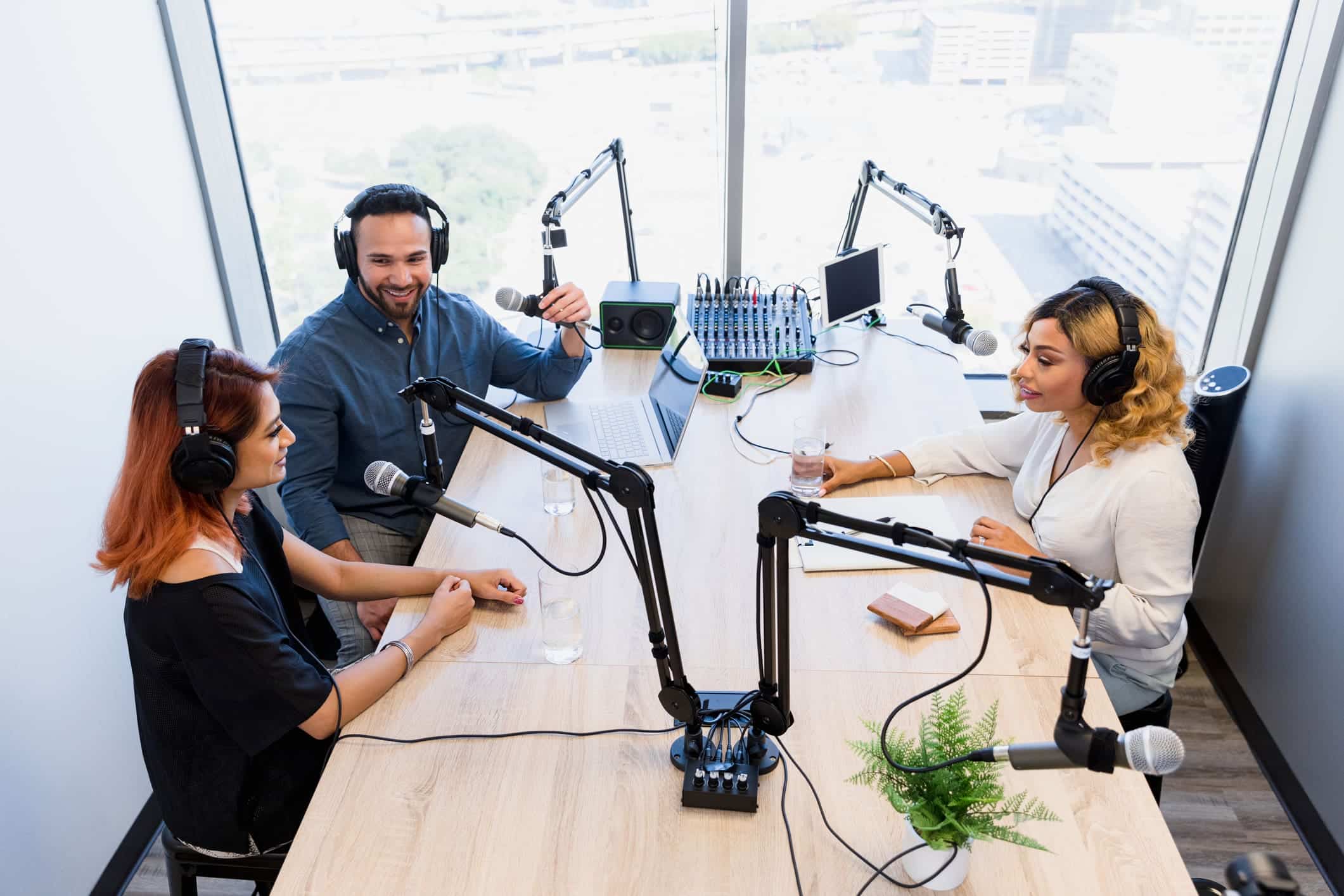
Is podcasting right for your association?
How can audio – which has been around for as long as humans have been communicating – be seen as something “new”? A recent episode of our podcast, The Member Engagement Show, explores the power of the podcasting channel.
How can audio – which has been around for as long as humans have been communicating – be seen as something “new”? A recent episode of our podcast, The Member Engagement Show, explores the power of the podcasting channel.
Host Beth Arritt’s guests on the episode were Frank Humada, Chief Business Development Officer, and Colby Horton, CEO, of Association Briefings. The company specializes in podcasting for associations, as well as data-driven newsletters.
How Can Associations Know if Podcasting is Right for Them?
Take an honest look at your membership first. A niche organization with a niche target audience can’t expect to get the same download numbers as some of the most popular national podcasts out there.
An association’s podcast audience might consist primarily of the association’s existing membership. So the size of your membership matters when considering whether or not podcasting is worth the time, investment, and effort – you have a small membership, it not be worth it.
You should also take into consideration how active your members are in terms of engagement. Do they read your newsletter? Do they participate in your online community? If they typically respond well to the content that you’re already putting out there, podcasting might be a channel worth adding, but if they don’t, you may want to examine whether the content you’re putting out is resonating before adding another channel.
As for podcasting itself, there are several elements that account for the success the format has enjoyed recently. Chief among them is choice and “portability.” Different people prefer to consume content in different ways. For those that retain information best by listening, having an audio option is greatly appreciated. It’s also a format that can be consumed anytime, anywhere – even while multi-tasking.
Think Before You Podcast
Before you even start recording, it’s important to map out the strategy for your podcast.
- Who is it for?
- What topics will be covered?
- Who will host it?
- What kinds of guests will be invited?
- How long should episodes be to maintain your audiences attention?
- What platforms will it be on?
- How often will episodes be published?
- How will it be promoted?
Too many associations launch podcasts with no real plan or prior research, which leads to inconsistency, confusion, and a podcast at risk of dying on the vine.
Finding the Host with the Most
Not everyone, even if they are the most knowledgeable subject matter experts in the industry, is comfortable or natural behind a microphone.
Audio is an intimate medium. Podcasts (usually) feature one host connecting with each listener, seemingly one on one. Listeners must be comfortable with the host. They must like the sound of their voice and style of their delivery. The host must “speak” for them and ask the questions the listener might ask.
With this in mind, look around your office – there are probably some natural talents there who have that innate hosting ability and likability, and who will be passionate about and committed to hosting the podcast.
Should you add video to your podcast?
If you’re considering whether to incorporate video into your podcast, ask yourself if there’s a real reason to? Will having visuals add to the content in some way, or is it just video of two talking heads on a Zoom call? On the other hand, if the content you’re trying to convey is highly visual, then it might be time to ask yourself if it deserves more production quality than simply adding video of a podcast recording.
Association Briefings leans toward advising associations to at least start with an audio podcast. You don’t want to lose the portability and flexibility of the podcast medium by requiring people to watch a screen.
Giving your audience the ability to listen in the background makes them feel more productive and, in most studies, has not been shown to harm information retention. One video element that you should include are episode transcriptions. Some listeners like to read along as they listen or go back to read a specific section, and it makes your podcast ADA (Americans with Disabilities Act) friendly.
Don’t Shy Away From Promotion
The number one mistake most associations make with their podcasts is they produce and launch the episodes, and then don’t follow through with promotion. One brief mention that a new episode is out usually isn’t enough. As with all content, you’re competing for attention, so never be reluctant to promote the podcast often, on every channel you have.
Build excitement around upcoming guests. Remind your audience that new episodes are coming the week before they’re released. Then share when the episode is published and promote it again a week after that. Use clips from the episode for social posts. Embed the episode in emails and newsletters. And make sure your guests are promoting their episodes on their own channels too. Make it as easy as possible for them to share by supplying social media language, the link to their episode, and anything else that will smooth the way.
Can associations make money with podcasts?
Podcasts can present non-dues revenue opportunities when you add them to your sponsor package. Offering ads on your podcast might give you something fresh you can propose to any vendors who are already maxed out on or disengaged with some of your other channels.
Podcast sponsorship can be the most effective marketing you offer. Studies show that 81% of podcast listeners pay attention to podcast ads and 60% of podcast listeners have bought something from a podcast ad. There is also a lot of flexibility in how you run podcast ads. They can be a recorded 30-second commercial, or ad copy read live by the host. Or it doesn’t have to be an ad at all: you could offer 30-second thought leadership slots.
You can also offer overall sponsorship, where the sponsoring organization is not only advertised during the episode, but noted every time you promote the podcast on your other channels. And you could decide to sell sponsorship for individual episodes, or the entire season.
Before assuming that sponsors will take advantage of this new opportunity, it may be worth connecting with a few to gauge their interest level and figure out what format would be most enticing.
Podcasting: Not an Expensive or Risky Endeavor
Podcasts can be one of the most effective content formats an association can produce. It’s not a “new” or particularly risky medium – the format has reached critical mass in terms of usage and acceptance across nearly all demographics. Because of our modern lifestyles, there is no podcast bubble that’s going to burst.
And podcasts are less expensive than most people think. Podcasting requires more dedication than gear.
That said, if you want your podcast to be successful, it can’t be something you do without preparation and focus. You need to have a plan, knowledge about your audience, a compelling host, and a schedule you’re committed to. You need to be confident and invested in promoting the podcast and each new episode. If you want to be a leading voice in your industry, podcasting is worth serious consideration.
Listen to more episodes of “The Member Engagement Show” here.


